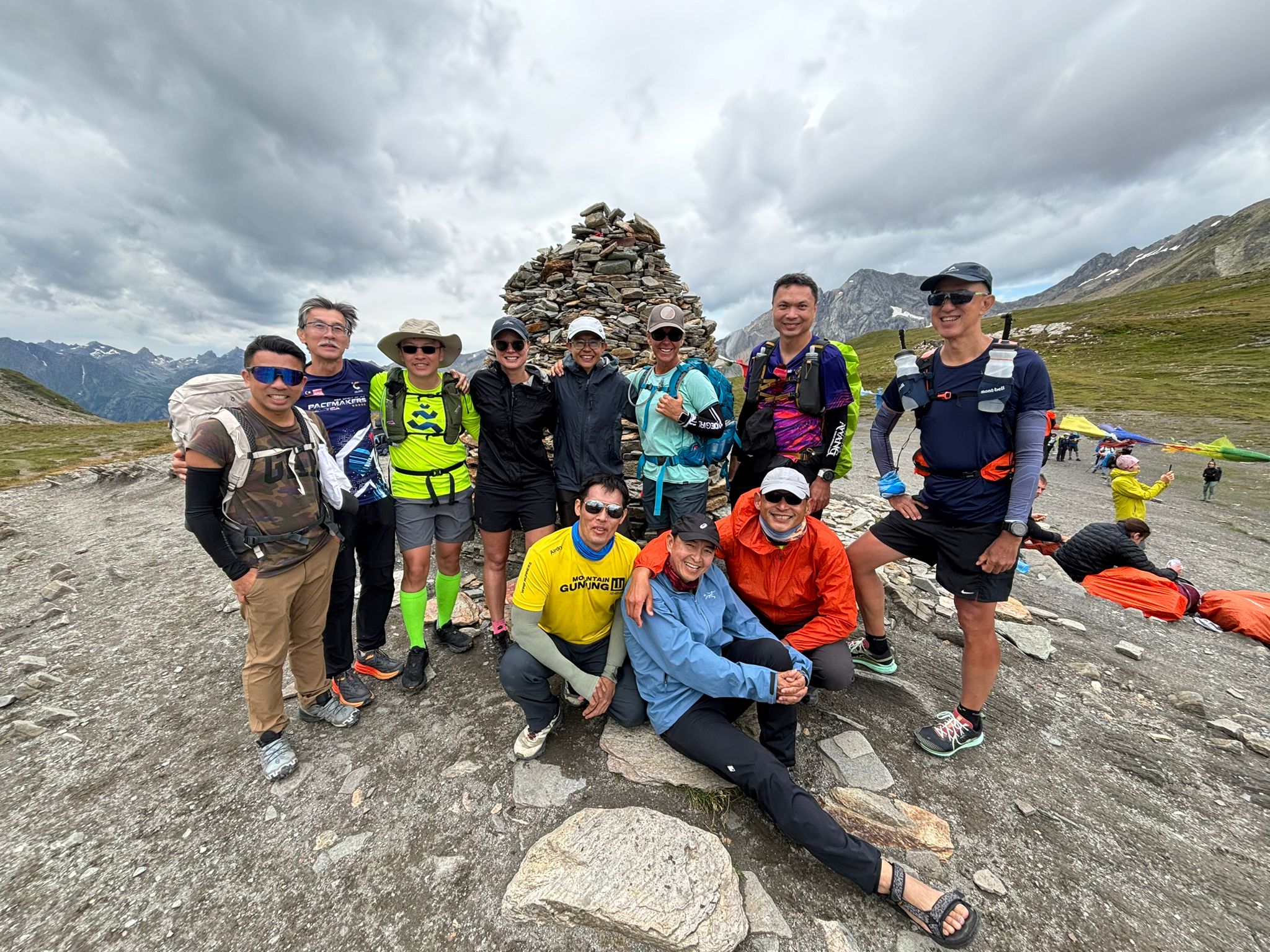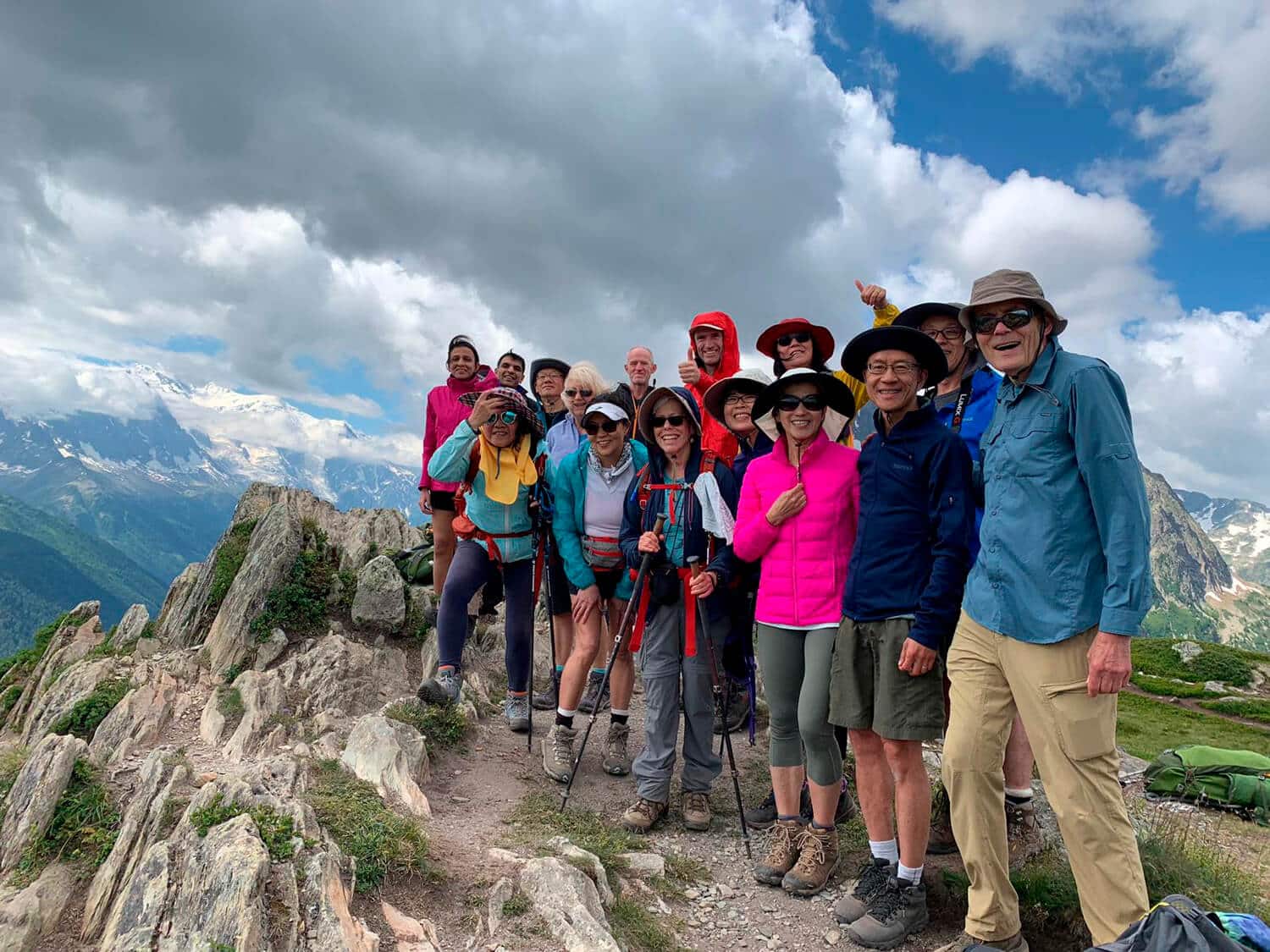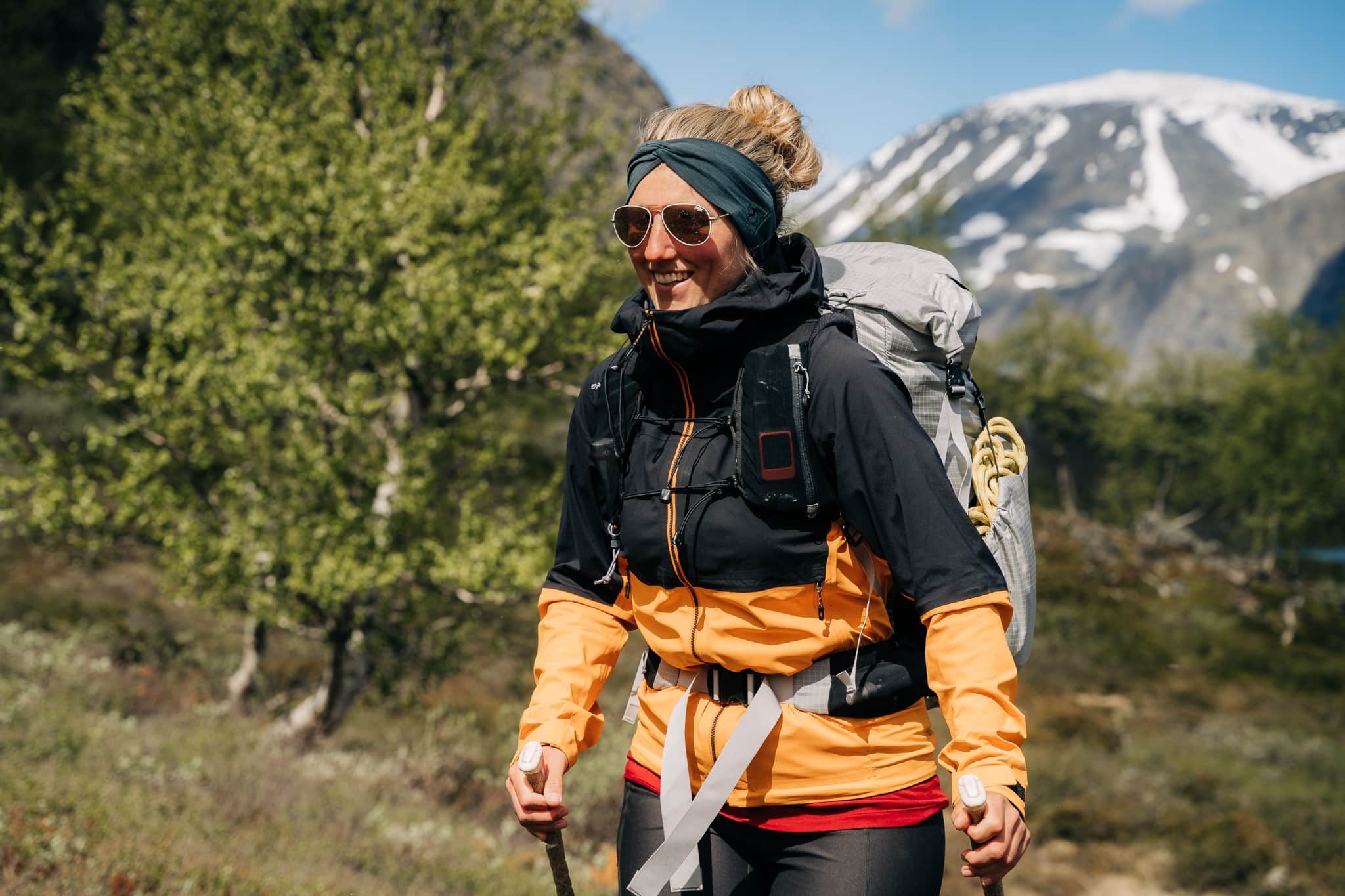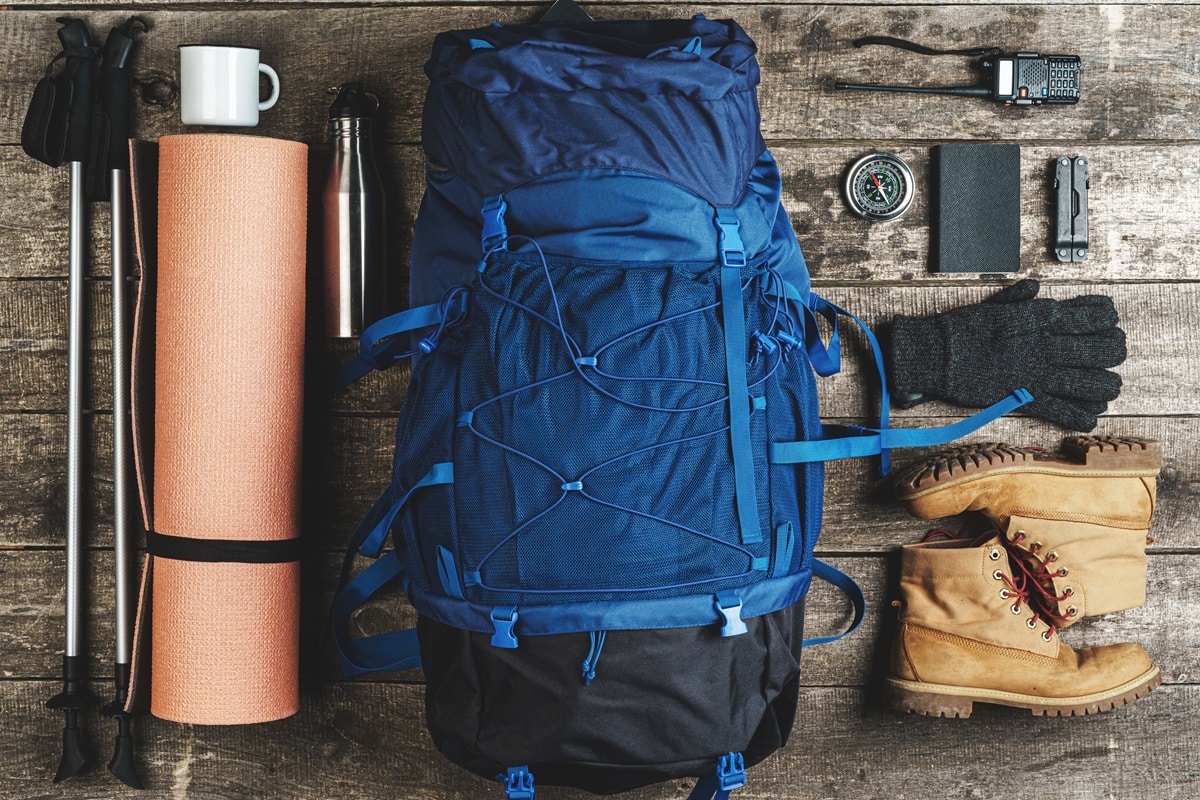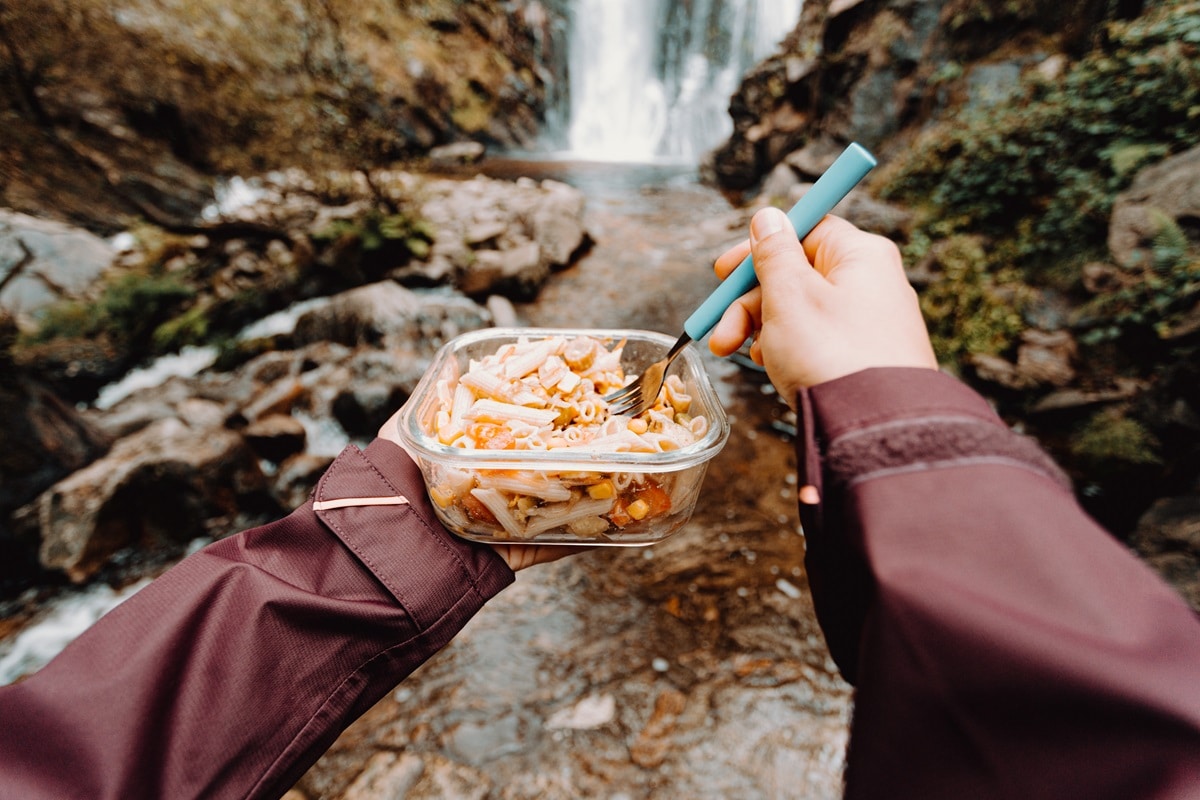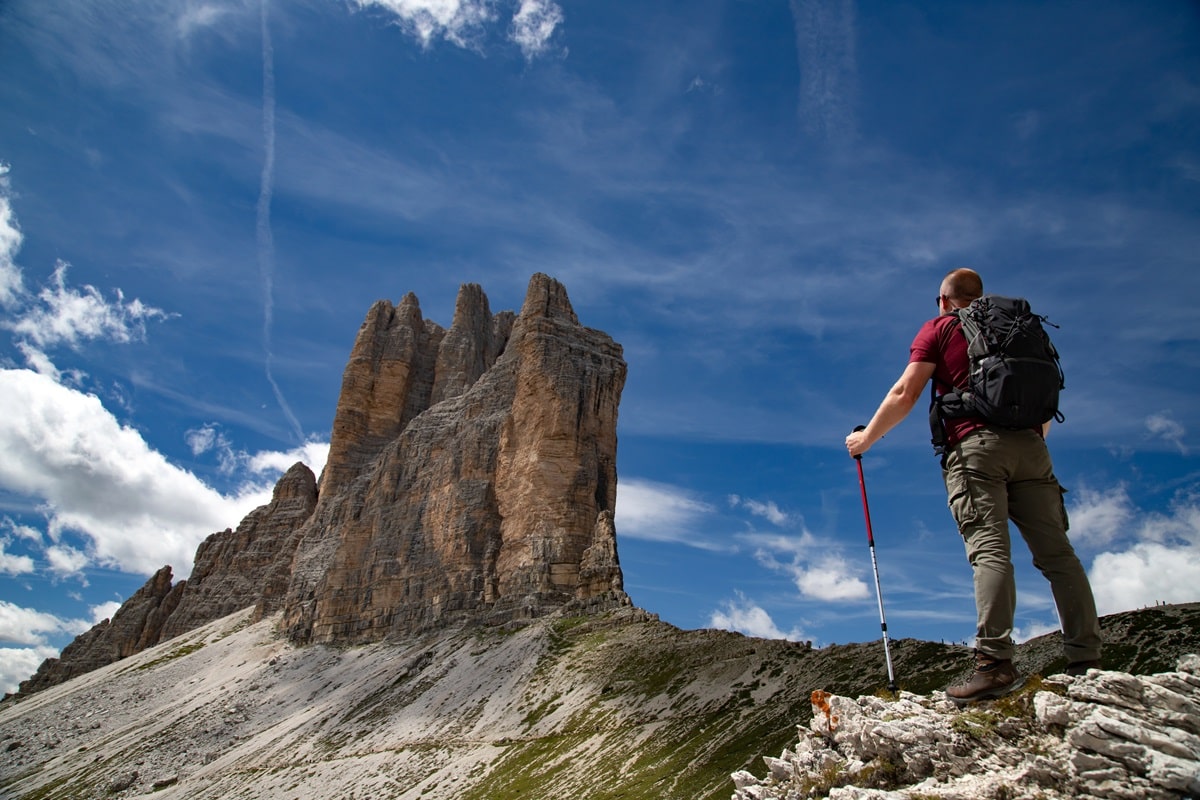What Makes the Tour du Mont Blanc Unique for Trekkers?
The Tour du Mont Blanc (TMB) is one of the most renowned long-distance hiking trails in Europe, circling the Mont Blanc massif and passing through France, Italy, and Switzerland. This trek offers a diverse range of landscapes, from lush valleys and alpine meadows to rugged mountain passes. The trail’s unique appeal lies in its combination of stunning natural beauty, cultural richness, and the challenge it presents to hikers of varying skill levels.
Why Is Choosing the Right Gear Essential for This Trek?
Selecting the appropriate gear is crucial for a successful and enjoyable trek on the TMB. The right equipment ensures comfort, safety, and efficiency, allowing you to focus on the experience rather than struggling with inadequate gear. Proper gear can help you manage the physical demands of the hike, protect you from the elements, and provide essential support in case of emergencies.
How Can Weather Variations Impact Your Packing List?
The weather on the TMB can be highly unpredictable, with conditions ranging from warm and sunny to cold and snowy, sometimes within the same day. This variability necessitates careful packing to ensure you are prepared for all eventualities. Waterproof and windproof layers are essential, as are items that provide insulation and sun protection. Being prepared for sudden weather changes can make a significant difference in your comfort and safety on the trail.
What Are the Key Considerations for Minimising Environmental Impact?
Hiking the TMB comes with a responsibility to minimise your environmental footprint. Following Leave No Trace principles is essential to preserving the natural beauty of the trail for future generations. This includes packing out all waste, avoiding single-use items, and being mindful of your impact on the local flora and fauna. By making environmentally conscious choices, you contribute to the sustainability of this iconic trekking route.
Essential Gear for the Trek
What Type of Backpack is Best Suited for the Tour du Mont Blanc?
Choosing the right backpack is crucial for a successful trek. For day hikes, a 25-35L backpack is ideal, while a 45-60L pack is better suited for carrying all your gear over multiple days. Look for a backpack with a comfortable fit, a hip belt, a sternum strap, and a rain cover. Some recommended options include the Osprey Kyte 46, REI 25L, and Columbia 16L.
How Do You Select the Right Hiking Boots for Varied Terrains?
Hiking boots are essential for navigating the diverse terrains of the Tour du Mont Blanc. Opt for boots that offer ankle support, are waterproof, and are well broken-in before the trek. The Oboz Bridger BDry is a reliable choice, providing the necessary support and protection for your feet.
Are Hiking Poles Necessary, and What Features Should They Have?
Hiking poles can significantly reduce strain on your joints and improve stability on uneven terrain. They are highly recommended for the Tour du Mont Blanc. Look for poles that are lightweight, adjustable, and have comfortable grips. Brands like Black Diamond and Intersport Chamonix offer excellent options.
What Should Be Included in a Basic First Aid Kit for This Trek?
A well-stocked first aid kit is essential for handling minor injuries and emergencies. Your kit should include:
- Bandages and adhesive tape
- Antiseptic wipes
- Pain relievers (e.g., ibuprofen)
- Blister plasters
- Tweezers
- Safety pins
- A small pair of scissors
- Any personal medications
Having these items on hand ensures you’re prepared for common trail injuries and can address them promptly.
Clothing and Layering Strategies
How Do You Choose Base Layers for Different Weather Conditions?
Selecting the right base layers is essential for comfort and temperature regulation. Opt for lightweight, breathable, and quick-drying materials such as Smartwool or Merino wool. These fabrics wick moisture away from your skin, keeping you dry and comfortable in varying weather conditions.
What Mid-Layer Options Provide the Best Insulation?
Mid-layers are crucial for insulation and retaining body heat. Fleece jackets or lightweight insulated jackets are excellent choices. They provide warmth without adding excessive weight to your pack. Look for options that are easy to layer and can be adjusted based on the temperature.
Why Are Waterproof Outer Layers Critical, and What Are the Best Materials?
Waterproof outer layers protect you from rain and wind, ensuring you stay dry and warm. Gore-Tex or similar materials are highly recommended for their waterproof and breathable properties. A good waterproof jacket and pants are essential to shield you from the elements, especially in unpredictable mountain weather.
How Many Changes of Clothes Are Necessary for a Multi-Day Hike?
For a multi-day hike like the Tour du Mont Blanc, packing efficiently is key. Aim for two short-sleeve tops, two long-sleeve tops, two pairs of hiking shorts or pants, and two non-hiking pants for evenings. Additionally, pack two sports bras and multiple pairs of underwear and socks. This balance ensures you have enough clothing without overburdening your pack.
Navigational Tools and Technology
What Type of GPS Device is Recommended for the Tour du Mont Blanc?
When trekking the Tour du Mont Blanc, a reliable GPS device is invaluable. Devices like the Garmin eTrex 32x or the Suunto Traverse Alpha are excellent choices. They offer robust navigation features, long battery life, and are designed to withstand the rigours of outdoor use. These devices ensure you stay on track, even in challenging conditions.
How Can a Physical Map and Compass Complement Digital Navigation Tools?
While GPS devices are incredibly useful, it’s wise to carry a physical map and compass as well. These traditional tools serve as a reliable backup in case of electronic failure or battery depletion. They also provide a broader view of the terrain, helping you understand the landscape and plan your route more effectively. Familiarise yourself with basic map-reading and compass skills before your trek.
Are There Any Mobile Apps That Can Enhance the Trekking Experience?
Several mobile apps can enhance your trekking experience on the Tour du Mont Blanc. Apps like AllTrails and ViewRanger offer detailed trail maps, GPS tracking, and user-generated content such as reviews and photos. These apps can provide real-time information about trail conditions and points of interest. Ensure your phone is equipped with offline maps, as signal coverage can be unreliable in remote areas.
How Do You Ensure Your Electronic Devices Remain Charged Throughout the Trek?
Keeping your electronic devices charged is crucial for navigation and communication. Consider carrying a portable power bank with a high capacity, such as the Anker PowerCore 20100. Solar chargers can also be useful, especially on longer treks. To conserve battery life, turn off non-essential features and use aeroplane mode when not actively navigating. Additionally, plan to recharge devices at refuges or accommodations along the route.
Food and Hydration Essentials
What Are the Best Practices for Packing and Managing Food Supplies?
When preparing for the Tour du Mont Blanc, it’s important to pack food that is lightweight, non-perishable, and high in energy. Opt for items like trail mix, energy bars, and dried fruits. These provide essential nutrients without adding unnecessary weight. Organise your food in resealable bags to keep it fresh and easily accessible. Plan your meals to ensure you have enough energy for each day of hiking, and consider the availability of refuges and towns where you can restock.
How Much Water Should You Carry, and What Purification Methods Work Best?
Staying hydrated is crucial on the trail. Aim to carry at least 2 litres of water at all times. A water bladder, such as the Platypus Big Zip EVO, is convenient for sipping on the go. Additionally, bring a refillable water bottle for backup. Water sources are generally available along the route, but it’s wise to carry a portable water philtre or purification tablets to ensure safe drinking water. Brands like Sawyer and Katadyn offer reliable filtration options.
Are There Any Lightweight, High-Energy Food Options Recommended for Hikers?
High-energy food options that are lightweight and easy to pack include:
- Energy Bars: Clif Bars, KIND Bars
- Trail Mix: A mix of nuts, seeds, and dried fruits
- Dried Fruits: Apricots, raisins, and apple slices
- Nut Butter Packets: Single-serving almond or peanut butter
- Instant Oatmeal: Quick and easy to prepare with hot water
These options provide a good balance of carbohydrates, proteins, and fats to keep you fueled throughout the day.
How Can You Plan Meals Considering the Availability of Refuges and Towns?
Planning meals for the Tour du Mont Blanc involves a mix of carrying your own supplies and utilising the services of refuges and towns along the route. Refuges often offer hearty meals, but it’s wise to have backup options in case of limited availability. Pack enough food for at least one extra day to account for any unexpected delays. When passing through towns, take the opportunity to restock on fresh supplies and enjoy local cuisine. This approach ensures you remain well-nourished and prepared for the journey ahead.
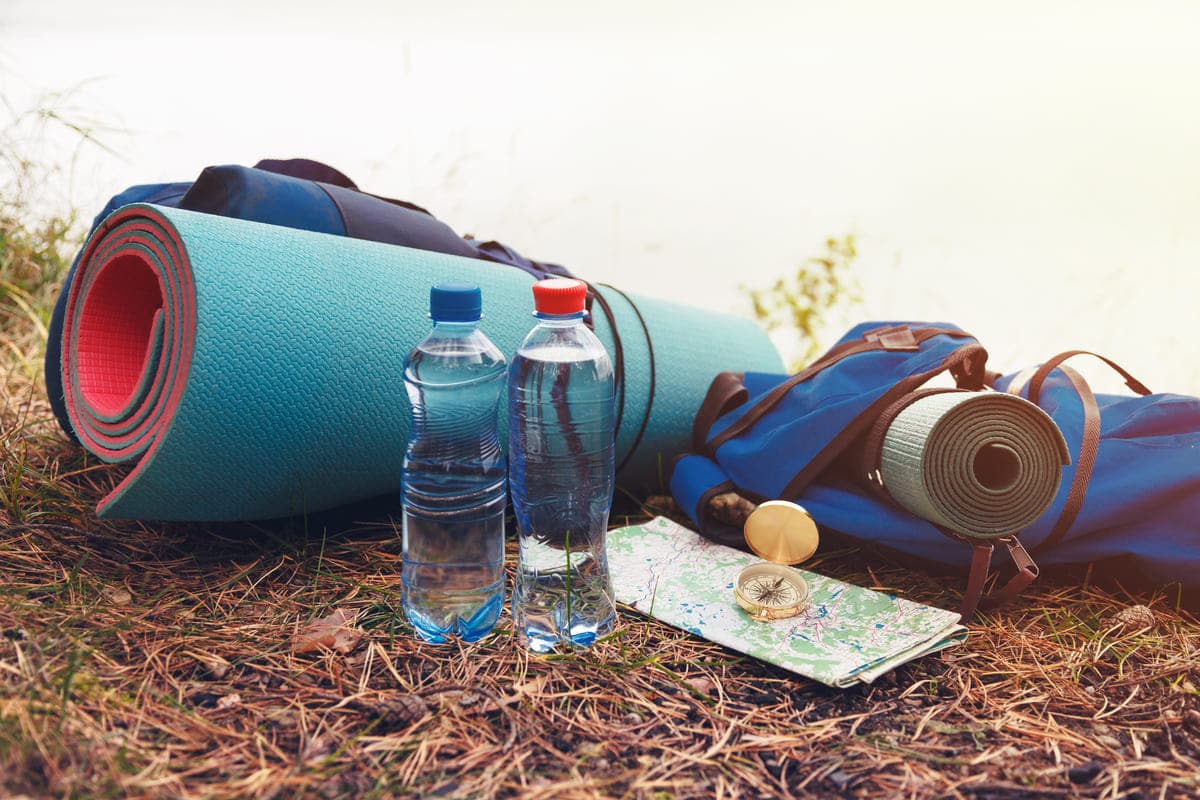
Personal Care and Hygiene
What Are the Must-Have Toiletries for Maintaining Hygiene on the Trail?
Maintaining hygiene on the Tour du Mont Blanc is essential for comfort and health. Pack travel-sized toiletries to save space and weight. Key items include:
- Biodegradable Soap: Dr. Bronners soap is versatile for both personal hygiene and laundry.
- Toothbrush and Toothpaste: Compact travel versions are ideal.
- Wet Wipes: Useful for quick clean-ups when water is scarce.
- Hand Sanitizer: Essential for maintaining hand hygiene.
- Sunscreen: Regular and travel-sized bottles, along with SPF lip balm.
How Do You Manage Waste and Maintain Cleanliness in a Leave No Trace Manner?
Adhering to Leave No Trace principles is crucial for preserving the natural beauty of the trail. Here are some tips:
- Pack Out All Trash: Carry a small, sealable bag for waste and dispose of it properly in towns or refuges.
- Use Biodegradable Products: Opt for biodegradable soap and toiletries to minimise environmental impact.
- Toilet Practices: Use designated facilities where available. If not, dig a small hole at least 200 feet from water sources and trails, and cover it after use.
Are There Eco-Friendly Products That Are Particularly Suited for Long Treks?
Eco-friendly products help reduce your environmental footprint. Consider these options:
- Biodegradable Wet Wipes: These decompose naturally and are less harmful to the environment.
- Reusable Water Bottles: Stainless steel or BPA-free plastic bottles reduce plastic waste.
- Eco-Friendly Sunscreen: Choose reef-safe and biodegradable sunscreens to protect both your skin and the environment.
What Solutions Exist for Dealing with Menstrual Hygiene on the Trail?
Managing menstrual hygiene on the trail requires some planning. Here are practical solutions:
- Menstrual Cups: Reusable and eco-friendly, menstrual cups are a space-saving option.
- Biodegradable Sanitary Products: If you prefer disposable options, choose biodegradable pads or tampons.
- Disposal Bags: Carry small, sealable bags for used sanitary products and dispose of them properly in towns or refuges.
By packing thoughtfully and adhering to these guidelines, you can maintain personal hygiene and minimise your impact on the environment while enjoying the Tour du Mont Blanc.
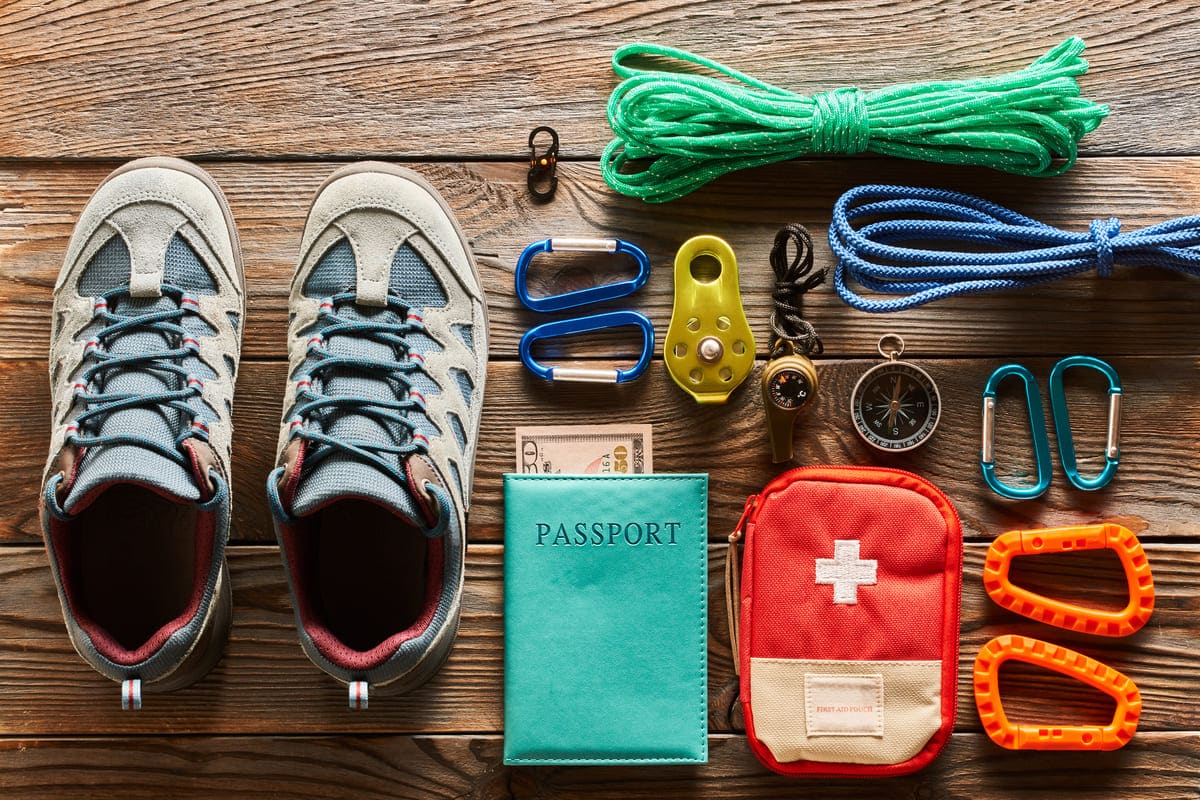
Safety and Emergency Preparedness
What Emergency Gear Should Be Included in Your Pack?
When preparing for the Tour du Mont Blanc, it’s essential to pack emergency gear to handle unexpected situations. Key items include:
- Safety Whistle: For signalling in case of an emergency.
- First Aid Kit: Basic supplies such as bandages, antiseptic wipes, pain relievers, and blister plasters.
- Emergency Blanket: Lightweight and compact, useful for warmth in case of sudden weather changes.
- Fire Starter: Matches or a lighter for emergencies.
- Multi-tool: A versatile tool for various needs.
- Navigation Tools: Map, compass, and GPS device for reliable navigation.
How Do You Prepare for Sudden Weather Changes or Injuries?
The weather in the Alps can be unpredictable, so it’s crucial to be prepared for sudden changes. Pack waterproof outer layers, such as a Gore-Tex jacket and pants, to stay dry during rain or snow. Layering is key; ensure you have base layers, mid-layers, and outer layers to adjust to temperature changes. For injuries, carry a well-stocked first aid kit and know basic first aid procedures. Familiarise yourself with the symptoms of altitude sickness and how to address them.
What Are the Key Steps in Developing an Emergency Action Plan?
An emergency action plan helps you respond effectively to unexpected situations. Key steps include:
- Identify Potential Risks: Understand the common hazards on the trail, such as sudden weather changes, injuries, and getting lost.
- Communication Plan: Ensure you have a way to communicate in emergencies, such as a mobile phone with a power bank or a satellite phone.
- Meeting Points: Establish meeting points with your group in case you get separated.
- Emergency Contacts: Keep a list of emergency contacts, including local rescue services and your country’s embassy.
- Training: Learn basic first aid and navigation skills before your trek.
How Can Trekkers Stay Informed About Potential Hazards Along the Route?
Staying informed about potential hazards is crucial for a safe trek. Here are some tips:
- Weather Updates: Regularly check weather forecasts for the region. Use apps or websites that provide real-time updates.
- Local Advice: Speak with locals, guides, or staff at refuges for the latest trail conditions and potential hazards.
- Trail Markings: Pay attention to trail markings and signs, which often indicate hazards or changes in the route.
- Emergency Services: Familiarise yourself with the locations of emergency services along the route and how to contact them.
By packing the right emergency gear, preparing for sudden weather changes, developing an emergency action plan, and staying informed about potential hazards, you can ensure a safer and more enjoyable trek on the Tour du Mont Blanc.
Final Thoughts and Conclusion
How Can Trekkers Ensure They Have Packed Efficiently for the Tour du Mont Blanc?
Packing efficiently for the Tour du Mont Blanc involves careful planning and consideration of each item’s necessity. Start by creating a detailed packing list and weigh each item to ensure your pack remains light. Prioritise multi-use items to minimise weight and bulk. Test your packed gear on practice hikes to ensure comfort and functionality. Remember, a lighter pack will make your trek more enjoyable and less strenuous.
What Are the Common Packing Mistakes to Avoid?
Avoiding common packing mistakes can significantly enhance your trekking experience. Here are a few pitfalls to watch out for:
- Overpacking: Resist the urge to bring items “just in case.” Stick to essentials and multi-use items.
- Ignoring Weather Variations: Failing to pack for diverse weather conditions can lead to discomfort. Ensure you have appropriate layers for rain, snow, and sun.
- Redundant Items: Avoid packing multiple items that serve the same purpose. For example, choose between a water bladder and a water bottle, not both.
- Heavy Electronics: Minimise the number of electronic devices and power banks. Opt for lightweight, essential gadgets only.
How Does Proper Preparation Enhance the Overall Trekking Experience?
Proper preparation is the cornerstone of a successful trek. By thoroughly planning and packing, you ensure that you are ready for the challenges and joys of the Tour du Mont Blanc. This preparation allows you to focus on the experience itself, rather than worrying about missing gear or unexpected weather. It also enhances safety, as you will be equipped to handle emergencies and sudden changes in conditions. Ultimately, being well-prepared leads to a more enjoyable and memorable adventure.
What Final Checks Should Be Made Before Embarking on the Tour du Mont Blanc?
Before setting off on your trek, conduct a final check to ensure everything is in order:
- Review Your Packing List: Double-check that all essential items are packed and nothing important is left behind.
- Check Weather Forecasts: Look at the latest weather updates to make any last-minute adjustments to your gear.
- Test Your Gear: Ensure all equipment, such as your backpack, hiking boots, and navigation tools, are in good working condition.
- Confirm Travel Documents: Verify that you have all necessary identification, travel documents, and cash.
- Inform Someone of Your Plans: Let a friend or family member know your itinerary and expected return date.
By following these steps, you can embark on the Tour du Mont Blanc with confidence, ready to enjoy the stunning landscapes and the adventure that awaits.
